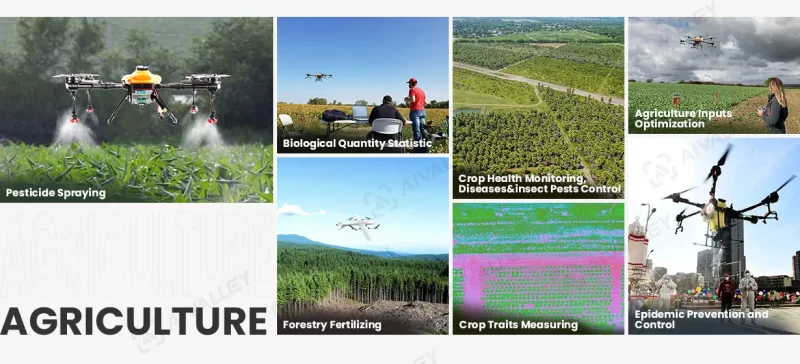Uncategorized
The Relationship Between Camera Pods and Agriculture
As the agricultural sector embraces technological advancements, camera pods have emerged as a game-changing innovation. These devices, often integrated with drones, are revolutionizing farming practices by enabling precision agriculture and data-driven decision-making. By combining high-resolution imaging and multi-sensor capabilities, camera pods are playing a critical role in optimizing crop production, resource management, and sustainability.

1. Precision Farming Through Advanced Imaging
High-Resolution Monitoring: Camera pods equipped with high-definition cameras provide detailed aerial imagery of farmlands, allowing farmers to monitor crop health, soil conditions, and irrigation coverage with exceptional clarity.
Multi-Spectral Analysis: Many camera pods integrate multispectral and hyperspectral sensors, enabling farmers to detect variations in plant health that are invisible to the naked eye. For example, they can identify early signs of pest infestations, nutrient deficiencies, or water stress.
2. Efficient Resource Management
Optimized Irrigation: Thermal imaging sensors in camera pods can detect areas of overwatering or drought, helping farmers fine-tune irrigation systems to conserve water and ensure optimal hydration for crops.
Targeted Fertilization and Pesticide Use: By analyzing data from camera pods, farmers can apply fertilizers and pesticides precisely where they are needed, reducing waste and minimizing environmental impact. This targeted approach improves yields and lowers input costs.
3. Early Detection of Issues
Pest and Disease Monitoring: Camera pods enable the early identification of pest outbreaks or diseases by capturing detailed images and thermal data. This allows farmers to take timely action, preventing widespread damage to crops.
Soil Health Assessment: LiDAR and other sensors in camera pods can assess soil topography and composition, helping to identify erosion risks, nutrient imbalances, or compacted areas that may hinder crop growth.
4. Large-Scale Data Collection and Analysis
Comprehensive Farm Insights: Drones equipped with camera pods can survey vast farmlands in a fraction of the time it would take with traditional methods. The data collected is processed into actionable insights using AI and cloud-based platforms, enabling farmers to make informed decisions.
Yield Prediction: By analyzing crop growth patterns and health data over time, camera pods provide accurate yield predictions, helping farmers plan harvesting schedules and optimize supply chain logistics.
5. Sustainability and Environmental Benefits
Reduced Resource Waste: Camera pods facilitate precise input application, reducing the overuse of water, fertilizers, and pesticides, which can harm the environment.
Carbon Footprint Reduction: By improving efficiency and minimizing the need for heavy machinery, camera pods contribute to lower greenhouse gas emissions in farming operations.
Biodiversity Monitoring: Camera pods can also be used to monitor wildlife activity and ensure that farming practices align with biodiversity conservation goals.
6. Future Potential of Camera Pods in Agriculture
AI Integration: The integration of artificial intelligence with camera pods will enable real-time analysis and automatic detection of issues, further enhancing precision farming.
All-Weather Operation: Advancements in camera pod technology will allow drones to operate effectively in challenging weather conditions, ensuring year-round monitoring.
Robotic Collaboration: Camera pods may integrate with autonomous robotic systems for tasks such as targeted spraying, planting, or harvesting.
Conclusion
The relationship between camera pods and agriculture highlights how technology is transforming farming into a more efficient, data-driven, and sustainable practice. By providing detailed insights into crop health, resource usage, and environmental conditions, camera pods empower farmers to make smarter decisions, maximize yields, and reduce environmental impact. As this technology continues to evolve, its role in shaping the future of agriculture will only grow stronger.
